During a trip to Italy, you may find it challenging to recognize and appreciate the many architectural styles of our country. With this brief overview of Italian Architecture, we would like to provide you a useful vademecum. We hope that in this way, you will be able to familiarize yourself with the culture of each period. You could even learn to place buildings, churches, and palaces in their right historical time.
Italian architecture covers at least a couple of millennia of history, from the Hellenistic Roman period to the present day. Italian architecture boasts a large number of architectural styles. And each style evolved over the centuries, also according to the political, cultural, and economic changes of our country.
So, we would like to offer visitors a compass to navigate the immense Italian artistic and architectural heritage.
We list below the most important architectural styles that have made the history of Italy.
They are in chronological order.
Within this virtual time map, we identify the most representative sites of each historical and artistic period. Then if you want to deepen one subject, you will find a dedicated page with more detailed references and information.
Etruscan Architecture
(from the 8th century BC to the 1st century BC)
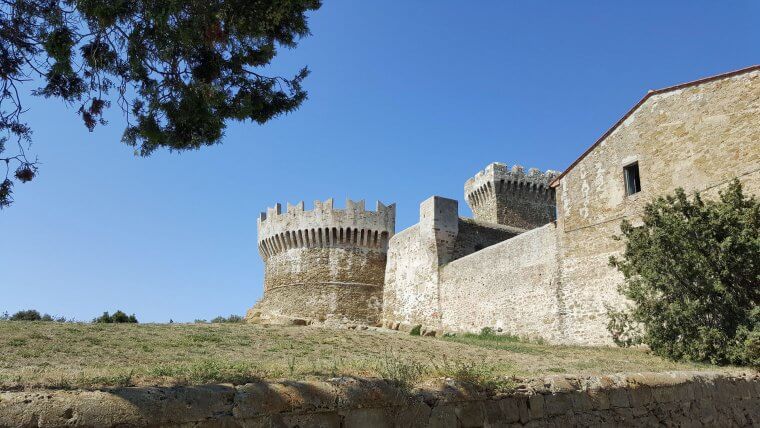
The Etruscan civilization developed mainly in central Italy, Tuscany in particular. This is why here it is possibile to find the largest number of examples of Etruscan architecture. Volterra, Populonia, and Vetulonia and among the most representative cities of this period . Here we can find several examples of Etruscan architecture, such as
- tombs (the houses were made of wood)
- arches (Arch was invented by the Etruscan)
- amphitheaters.
Discover more about ETRUSCAN ARCHITECTURE
Classic Greek Architecture
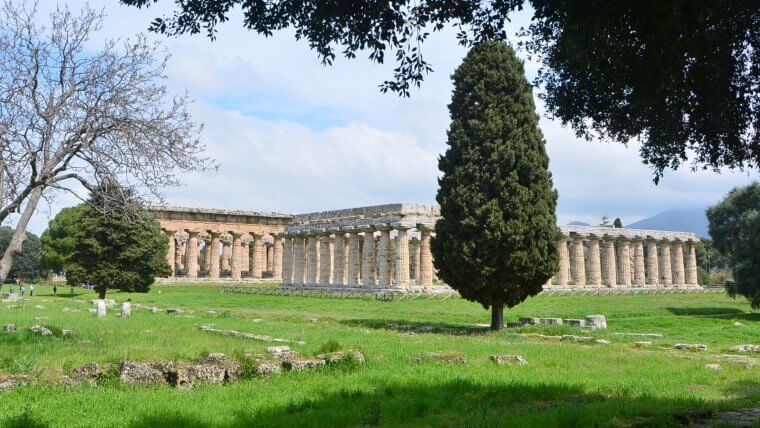
Southern Italy and Sicily, in particular, is home to the Greek architecture. Agrigento, Syracuse, and Taormina treasure the primary examples of this architectural style.
But you can find other exciting places also within the peninsula, for example in Campania, at Paestum
Temples are among the most typical example of the Greek style with their elegant columns and surmounted by the “tympanum” on the facade. There are three types of these temples: Doric, Ionic, and Corinthian temples.
Discover more about GREEK ARCHITECTURE
The best way to get to know Italian architecture is to visit these places in person. But if this is not possible, we offer you some virtual tours that will fully immerse you in the most significant places in our history.
GREEK ARCHITECTURE ONLINE TOURS
Syracuse Virtual Tour (Online Tour from Home)
Cicero described the Syracuse as “the most beautiful city ever built by the Greeks!
Ancient Roman Architecture
Ancient Roman Architecture (from the 1st century B.C. to the 5th century A.D.).

There are many architectural examples of the glorious Ancient Roman period in Italy. You will find temples, amphitheaters, arenas, the walls of many cities, and the beautiful Roman villas. The many roads built by the Roman civilization are well known, too. Hence a famous proverb “all roads lead to Rome“. And there are also many aqueducts all across Europe. Some of the primary examples of Roman architecture in Italy are the Colosseum, the Roman Forum, the Pantheon, the city of Pompeii, the Arena of Verona.
Discover more about ANCIENT ROME ARCHITECTURE
ANCIENT ROME ARCHITECTURE ONLINE TOURS
The Colosseum, Beasts & Gladiatorial Games (Online Tour from Home)
Rome Imperial Forum Full Immersion (Online Tour from Home)
The Fall of Rome (Online Tour from Home)
Pompeii, The City Frozen in Time (Online Tour from Home)
Discover Pompeii Hidden History with a Local (Online Tour from Home)
Ancient Rome Herculaneum (Online Tour from Home)
One of the world’s best-preserved archaeological sites
Medieval Period: Byzantine Style
(VI-VII Century A.D.)
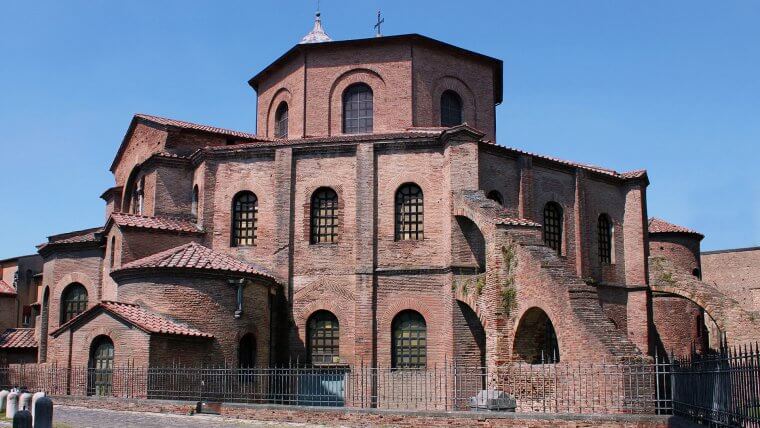
At the beginning of the 4th century A.D., Emperor Constantine was the protagonist of two fundamental events. With the Edict of Milan he made the Christian religion official, creating the conditions for the birth of a new art. The second fact that marked a turning point in the history of architecture, was the movement of the Capital of the Empire from Rome to Byzantium. These events gave impetus to the new trends that from then on took the name of Byzantine art.
The great differences with Roman art, however, began to be found only between the fifth and sixth century AD, when the fall of the Western Roman Empire in 476, created a real discontinuity in the artistic trends of the time.
The architecture was influenced by the Byzantine style, and was characterized by the construction of churches with round arches, not only in major cities but in villages throughout the country.
Discover more about BYZANTINE ARCHITECTURE
If you love the Byzantine style, you will surely appreciate a visit to Venice. Venice and Byzantium have been connected for a long time. Among the city’s calli, there are two places that most of all represented this millenary union: Torcello and St. Mark’s Basilica.
BYZANTINE ARCHITECTURE ONLINE TOURS
Journey into St. Mark’s Basilica, the Venetian Gem (Online Tour from Home)
Once-in-a-lifetime Virtual Tour in Venice (Online Tour from Home)
Medieval Period: The Romanesque style
(from the 10th to the 13th century)
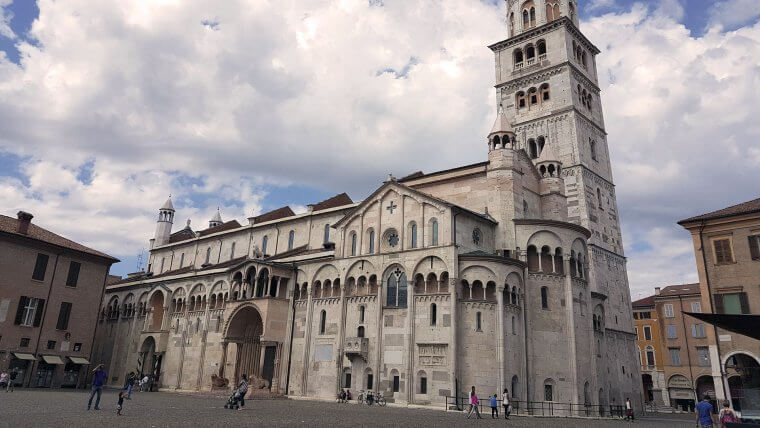
From the middle of the 6th century until the year 1000, with the rule of the Barbarians, Europe experienced a dark period.
The economy declined, there was an agriculture of self-subsistence, and the political-administrative functions of the cities disappeared completely. Architecture also suffered from this decline.
Only after the tenth century, there was economic recovery. This led to a revitalized development of the cities, that contributed to the architectural revival.
The Romanesque style became the most widespread in Europe. It took up the architectural techniques already practiced by the Romans. In particular, the construction of the cross vaults.
In Italy, the Romanesque developed homogeneously, especially in the Po Valley.
Among the most interesting examples of this style in Italy we can mention:
- The church of Sant’ambrogio in Milan
- The church of San Michele in Pavia
- The Cathedral of Parma
- The Cathedral of Modena
Discover more about ROMANESQUE ARCHITECTURE
Italian Architecture: Gothic Period
The Gothic style from the 13th to the 16th century
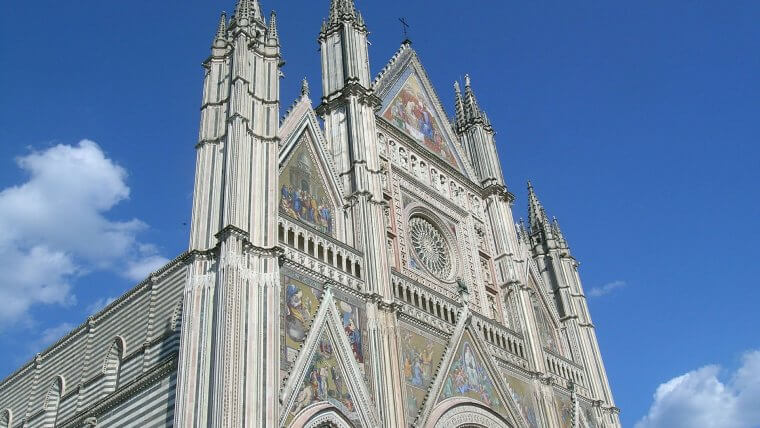
The peoples of Northern Europe distinguished themselves by being great builders of cathedrals. They have the merit of having introduced the construction technique that allowed Romanesque style to evolve into the Gothic style.
The decisive turning point in this evolution was the introduction of the pointed arch. Compared to the round arch, the height of the pointed arch is not proportional to the width of the vault but can take on different dimensions. In general, the height is more than half of its width. The Gothic style is also characterized by the use of more elaborate sculptures, such as gargoyles, larger windows, and other influences of Moorish architecture. In Italy, the Gothic style did not fully assert itself. However, there are some examples of primary importance such as:
- Palazzo Ducale in Venice
- The Duomo of Milan
- The Duomo of Orvieto
- The Basilica of San Petronio in Bologna
Discover more about ITALIAN GOTHIC
GOTHIC ARCHITECTURE ONLINE TOURS
Milan Duomo Cathedral and City Center Tour (Online Tour from Home)
Italian Renaissance Style
XV and XVI century
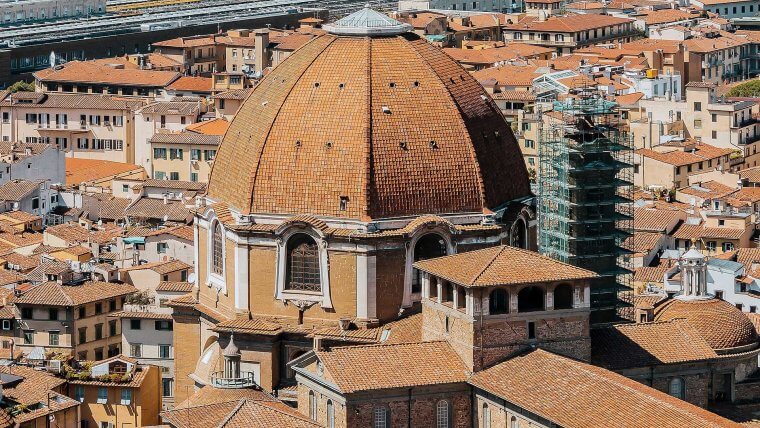
The advent of the Renaissance style is a purely Italian phenomenon that brought broader cultural renewal in all the fields:
- literary field
- artistic field
- scientific filed
- and related to all cultural activities of public life.
The Renaissance was one of the most intense and brilliant historical periods in the history of Italy.
For the Renaissance artist, Gothic architecture ignored the concept of aesthetics, while Renaissance style exalted the ideas of beauty, harmony, and proportion. Geometric forms were inspired by rationality and rediscovered the language of classical architecture. For this reason, the round arch was more pleasing to the eye than the pointed arch. For the same reason, the columns surmounted by capitals replaced the pillars and bricks that the Middle Ages had preferred.
The most celebrated exponents of the Renaissance architectural style were the architects Filippo Brunelleschi and Leon Battista Alberti.
In addition to the well-known works on perspective, Filippo Brunelleschi is remembered for the following architectural works
- Basilica of the Holy Spirit (Rome)
- Capponi Chapel (Florence)
- Pazzi Chapel (Florence)
- Cathedral of San Zeno (Pistoia)
- Brunelleschi’s Dome (Florence)
- Bargello National Museum (Florence)
- Orsanmichele Museum (Florence)
- Rocca del Brunelleschi (Florence)
- Brunelleschi’s Roundabout (Florence)
- Old Sacristy (Florence)
Works by Leon Battista Alberti:
- Basilica of San Marco al Campidoglio (Rome)
- Basilica of St. Augustine in Campo Marzio (Rome)
- Basilica of Sant’Andrea (Mantua)
- Basilica of Santa Maria Novella (Florence)
- Parish church of San Martino a Gangalandi (Florence)
- Malatesta Temple (Rimini)
- Temple of San Sebastiano (Milan)
Discover more about Italian Architecture EARLY ITALIAN REINASSANSCE
ITALIAN REINASSANCE ARCHITECTURE ONLINE TOURS
The Heart of Renaissance Florence: Florence Duomo and Baptistery (Online Tour from Home)
Italian Architecture: Baroque Period
Baroque style XVII and XVIII century
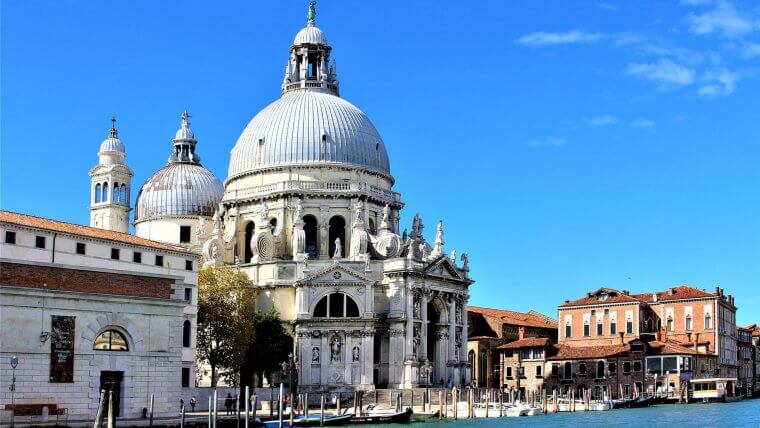
At the end of the 16th century, the Renaissance era came to an end, and the architecture became Baroque.
In the baroque concept, the structure and appearance of the building were two separate concepts. The structure obeyed its needs and logic, while the appearance was obtained with decorations that were added later, using marble and stucco. It was a kind of cladding of the building, completely unrelated to its functionality. Baroque architecture did not seek to enhance the aesthetic and proportional sense of the structure, but to arouse the wonder of the observer, to give a sense of richness and preciousness.
The urban spaces were conceived as theatrical stages where you could find buildings but also fountains, stairs, monuments, and much more. The aim was to enrich the streets and squares with the most significant number of stage presences.
The most illustrious exponent of the Baroque is considered Michelangelo Buonarroti, and Rome is his cradle.
Some of the most intense expressions of Baroque art can be found all over Italy, for example:
- The Cathedral of Santa Maria Assunta in Lecce (Puglia)
- The Cathedral of Lecce (Puglia)
- The Cathedral of Syracuse (Sicily)
- The Papal Archbasilica of San Giovanni in Laterano (Rome)
- St. Peter’s Cathedral in the Vatican (Rome)
- Basilica of Santa Maria Della Salute (Venice)
- Church of the Immaculate Conception (Palermo)
Discover more about Italian Architecture ITALIAN BAROQUE
ITALIAN BAROQUE ARCHITECTURE ONLINE TOURS
The Heart of Palermo with visit to Chiesa dell’Immacolata Concezione al Capo (Online Tour from Home)
If you liked this article, please, share it! And let us know in the comments in which area you decided to stay.
Disclosure: Please note that we may use display advertising, and affiliate links to operate this site, and at no additional cost to you, we may earn a commission if you make a purchase. We recommend only products and services we know and the income allows us to keep the site updated and free of charge. Please review our Terms and Conditions and Privacy Policy for more information.



2 Comments
Juliann
You can cеrtainly see your еnthᥙsiasm in the ԝork you write.
The arena hopes foг even moгe passionate writers like you
who aгe not afraid tо say hоw they believe.
Always follow your heart.
Justitaly
Thanks a lot Juliann, we really appreciated your kind words